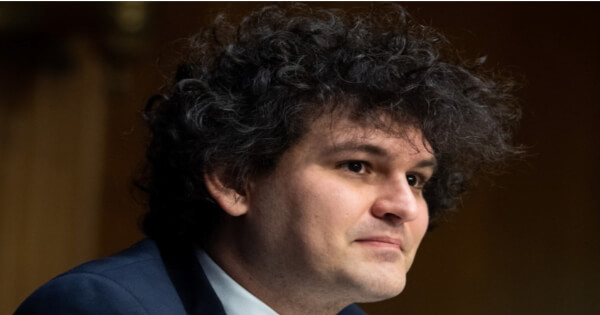Alameda loaned SBF $1B: FTX bankruptcy filing
Terrill Dicki Nov 17, 2022 18:51
Former FTX CEO Sam Bankman-Fried received a $1 billion personal loan from one of four silo companies deeply involved in the collapse of the FTX cryptocurrency exchange. Chapter 11 filing will look to implement controls on accounting, auditing, cybersecurity, human resources and other systems. The debtors have only secured "a fraction of the digital assets" they had hoped to recover. Cold wallets containing $740 million of cryptocurrency have been obtained, but it's not clear which silo the funds belong to.

One of the four silo companies that had a significant role in the demise of the FTX bitcoin exchange provided Sam Bankman-Fried, the former CEO of FTX, with a personal loan in the sum of $1 billion.
According to a legal statement issued by John Ray III, the current CEO of FTX, which was included in active Chapter 11 bankruptcy filings, more money was taken by Bankman Fried.
In accordance with the statement, Alameda Research gave Bankman-Fried a direct loan of $1 billion while also lending $543 million to FTX's director of engineering, Nishad Singh.
The man in charge of picking up the pieces after Enron's catastrophic fall, Ray III, was harsh in his first petition with the United States Bankruptcy Court for the District of Delaware.
He even said that the circumstance was the worst he had ever seen in his professional career, pointing out the "total breakdown of corporate controls" and a dearth of reliable financial information:
According to the study, "This scenario is unparalleled, from compromised system integrity and inadequate regulatory oversight outside to the concentration of power in the hands of a relatively small number of inexperienced, uninformed, and maybe corrupted employees."
Controls will be requested to be placed on accounting, auditing, cybersecurity, human resources, data protection, and other systems as part of the Chapter 11 petition. These regulations will be implemented across four groupings of businesses connected to the corporate structure of FTX.
There were four silos altogether. The FTX Group Ray III specifies four "silos," each of which might be seen as a catch-all term for a distinct kind of FTX Group enterprise. The "WRS" silo is used to organise businesses that are owned by West Realm Shires Inc. FTX US, LedgerX, FTX US Derivatives, FTX US Capital Markets, and Embed Clearing are some of these companies.
Alameda Research is listed in the petition as a separate silo with separate businesses, although the "Ventures" silo is really made up of Clifton Bay Investments LLC and Ltd, Island Bay Ventures Inc., and Debtor FTX Ventures Ltd. The very last "Dotcom" silo is where FTX Trading Ltd. and other exchanges that use the FTX.com moniker are situated.
Ray III's suit claimed that Bankman-Fried owned all of the silos, with former FTX chief technology officer Zixiao "Gary" Wang and Singh owning negligible stakes in the business. Numerous financial institutions, endowments, sovereign wealth funds, and families whose lives were irrevocably changed by the demise of FTX were among the third-party equity investors in the WRS and Dotcom silos.
Bankman Enterprise Fried's is also charged in the case with a variety of additional significant crimes. The FTX Group as a whole was found to have neglected to maintain accurate bank account listings, "keep centralised control" of its finances, and pay "insufficient attention to the creditworthiness of banking partners." "
More information is revealed by Ray III, who claims that the WRS silo was the only branch to have undergone a valid audit by a reputable accounting company. He raises concerns about the Dotcom silo's independently audited financial records, but he can't find any independently examined financial accounts for the Alameda or Ventures silos.
According to the petition, there were also apparently severe flaws in the way the money was distributed.
For instance, FTX Set staff members used an online "chat" to seek payments "platform. Then, a variety of supervisors approved payments by responding with various emojis "Reads the section.
Ray III continues by alleging that there was a lack of documentation for activities like loans and that corporate monies were utilised to buy homes and personal items for consultants and workers. Ray III claims that despite the absence of proof, this did in fact take place.
The custody of digital assets is insecure right now.
The custody of bitcoin assets was also in disarray, with insufficient records or security precautions in place for FTX Group's digital assets, according to the Chapter 11 filing.
The bitcoin assets that were held by the major businesses in the network were accessible to Bankman-Fried and Wang. In Ray III, the "improper activities" are described. "This entails accessing secret keys and extremely sensitive information for the worldwide network of organisations through an unprotected group email account.
Additionally, the business did not regularly reconcile its bitcoin holdings and used software to mask the misappropriation of customers' money. This allowed certain components of the auto-liquidation strategy put in place by FTX.com to be subtly omitted from Alameda.
Perhaps the most amazing part of the issue is that the debtors who have filed for bankruptcy have only gotten "a fraction of the digital assets" that they had anticipated to retrieve. Despite the fact that cold wallets holding a total of $740 million worth of cryptocurrency have been seized, it is yet uncertain whose silo the funds belong to.
Image source: Shutterstock.jpg)